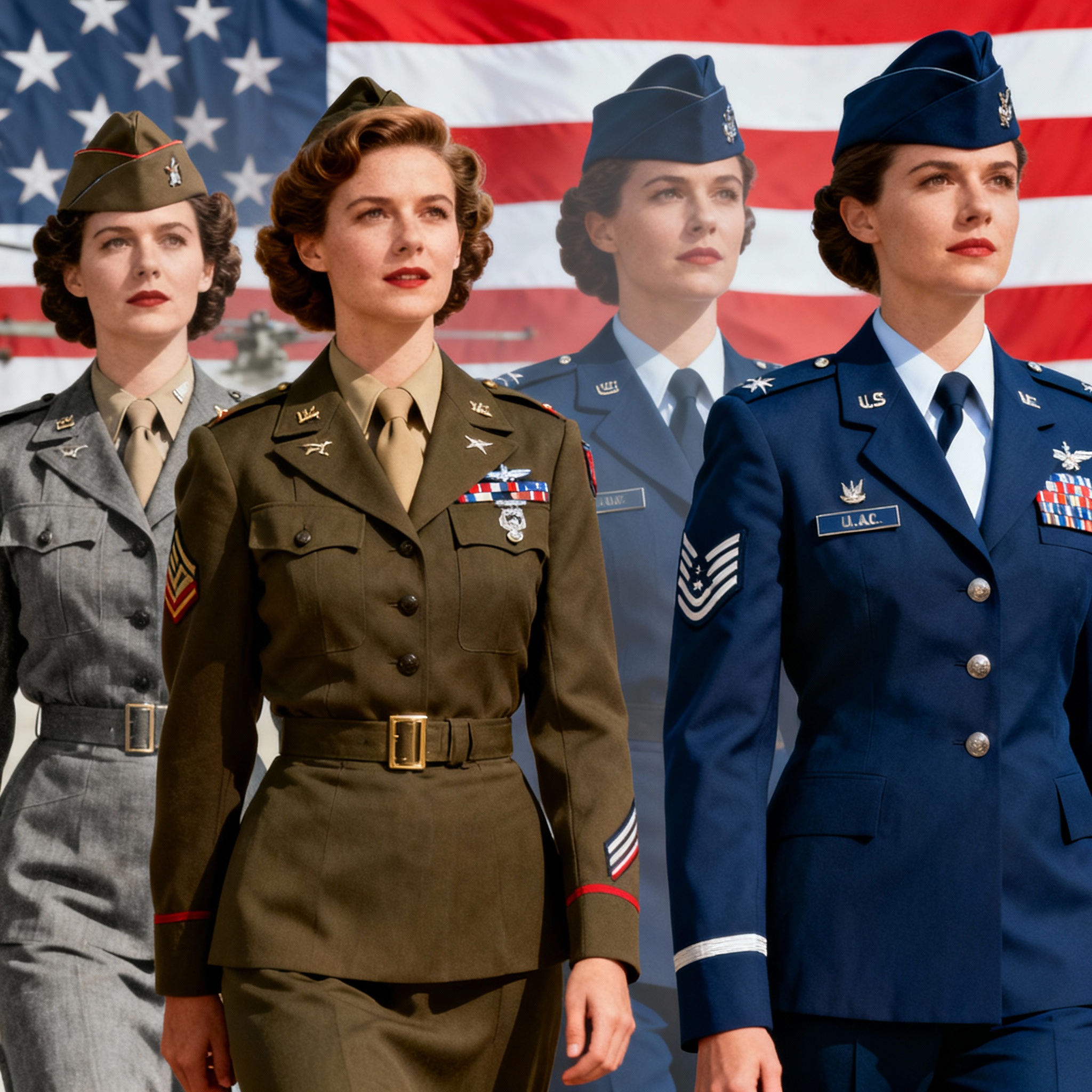
WAAC to Air Force: The Evolution of U.S. Military Uniforms Explained
Published on Sep 30, 2025
Introduction: Did You Know the WAAC Uniform Changed the Course of Military Fashion?
In 1942, over 150,000 American women stepped into military service through the Women’s Army Auxiliary Corps (WAAC), forever altering the landscape of uniformed service. But what many don’t realise is how this pivotal moment helped shape the modern US Air Force uniform.
For those passionate about military history, WW1 and WW2, and collecting wartime memorabilia, understanding WAAC uniforms isn’t just a niche interest—it’s key to appreciating the legacy behind today’s army aviation uniform, ASU uniform wear, and beyond.
In this article, you’ll discover:
- The evolution of WAAC uniforms
- How they influenced the modern US Air Force uniform
- Actionable tips for collectors and history lovers
- Common mistakes to avoid when sourcing vintage military attire
- How current trends are keeping these historic designs alive
The Origins of WAAC: A Milestone in Military Equality
Humble Beginnings in 1942
The WAAC was created by Congress in May 1942 to allow women to serve in non-combat military roles. These included clerical work, communications, and aircraft maintenance—a precursor to the full military inclusion seen in later decades.
Uniform Features in Early WAAC:
- Olive drab field uniforms
- Skirted service dress for formal events
- WAAC cap badge featuring Pallas Athene, the Greek goddess of war and wisdom
Real-Life Example:
A restored WAAC summer service dress was recently auctioned for over $1,200, showcasing the collector demand for authentic and well-preserved items.
How WAAC Uniforms Influenced the US Air Force Uniform
When the U.S. Air Force became an independent branch in 1947, much of its culture and uniform design was inherited from the U.S. Army—including lessons learnt from the WAAC.
US Air Force Uniform Inspirations:
- Structured, professional silhouettes
- Practicality over ornamentation
- Rank insignia placements and color schemes
By the 1950s, the US Air Force uniform transitioned to a blue-grey palette but retained many of the WAAC’s innovations in comfort and utility.
Understanding the Army ASU Jacket and AGSU Uniform in Historical Context
Both the Army Service Uniform (ASU) and the Army Green Service Uniform (AGSU) reflect design influences going back to WAAC and WW2-era military dress.
Army ASU Jacket:
- Worn for formal occasions and ceremonies
- Closely fitted, tailored look for professionalism
- Shares design DNA with early women’s WAAC service jackets
AGSU Uniform:
- Introduced to mirror WW2 "pinks and greens" style
- Highly nostalgic, connecting modern soldiers with their historical counterparts
Actionable Tip:
When collecting or displaying an army ASU jacket or AGSU uniform, ensure correct insignia and accessories are used. Many online listings contain inaccuracies or post-war replacements.
Modern US Air Force Uniform: What's Changed and What Hasn't?
Despite technological and fashion advancements, core values remain. The US Air Force uniform of today still promotes:
- Clean lines and discipline
- Ease of movement for varied roles
- A respectful nod to tradition
Current Trends in US Air Force Uniform Design:
- Gender-neutral tailoring: Addressing fit issues from past decades
- Sustainable materials: Aligning with eco-conscious military directives
- High-tech textiles: Moisture-wicking, flame-resistant materials for flight suits and combat roles
Common Pitfalls When Collecting WAAC and Related Uniforms
Many enthusiasts get tripped up when entering the world of WW2 uniform collecting. Here are some red flags to watch for:
1. Mislabeling or “Frankenstein” Uniforms
- Vendors often piece together parts from different eras to create a “complete” uniform
- Look for correct unit patches, rank insignia, and buttons for the era
2. Fake or Reproduction WAAC Badges
- Original Pallas Athene badges are stamped and show slight wear from age
- Repros are too shiny and often made from incorrect alloys
3. Confusing ASU and AGSU Components
- ASU is often navy blue; AGSU uses olive drab
- Mixing these up in collections leads to historical inaccuracy
Pro Tip:
Consult archived military manuals or work with reenactment groups to validate uniform setups.
US Air Force Uniform & Army Aviation Uniform: Connections That Last
The army aviation uniform—particularly flight suits and officer dress—retains a heritage linked to WAAC-era aviators and support personnel. Female Air Force pilots today continue this lineage, proving how one uniform can spark lasting change.
Example:
- In 2021, the Air Force unveiled a redesigned flight suit for pregnant service members—building on WAAC’s original push for gender-sensitive uniforms.
How to Start or Grow Your Collection: A Step-by-Step Beginner's Guide
1. Do Your Research
- Read field manuals, old military catalogues, and museum guides
- Understand the different eras and uniform variations
2. Shop Smart
- Use trusted vendors like militaria shows, eBay verified sellers, or estate sales
- Ask for provenance and historical verification
3. Preserve with Care
- Store uniforms in acid-free garment bags
- Avoid hanging heavy items to prevent fabric stress
4. Display with Accuracy
- Create mock-ups based on real photos from the era
- Include replica gear like canteens, belts, and documents
US Air Force Uniform in Reenactments & Museums: Keeping History Alive
Living history events and museums play a vital role in showcasing WAAC and Air Force attire. Participating or volunteering in these settings helps:
- Spread awareness of military women's contributions
- Keep uniform traditions accurate and respectful
- Educate new generations on military dress code evolution
Conclusion: Why the US Air Force Uniform’s Legacy Begins with WAAC
WAAC uniforms weren’t just utilitarian—they were revolutionary. They set the precedent for gender inclusion, comfort, and professionalism in military dress that we see today in the US Air Force uniform, the AGSU uniform, and even the army aviation uniform.
For collectors, history lovers, and reenactors, exploring this evolution is more than a hobby—it’s a way to honour those who paved the way.
